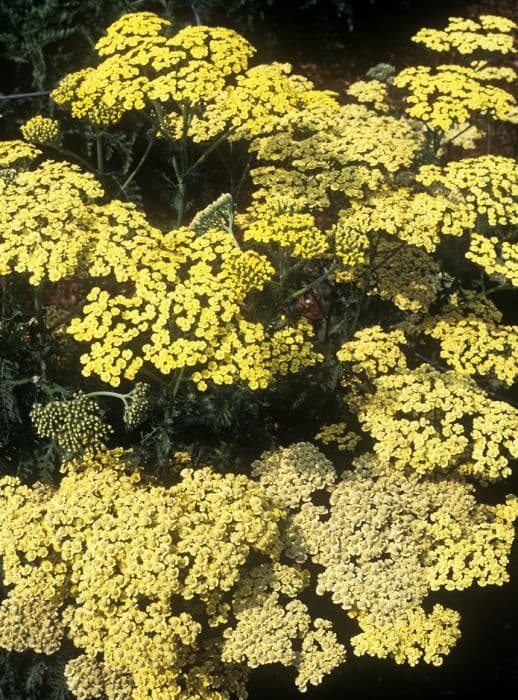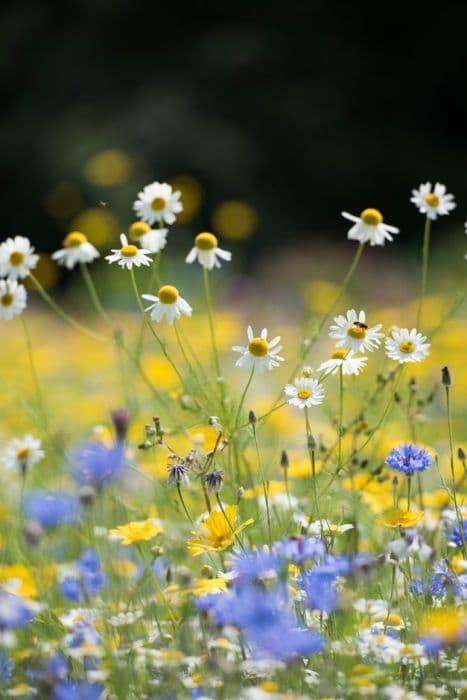Leopard Plant Farfugium japonicum 'Crispatum'

ABOUT
The Farfugium japonicum 'Crispatum', commonly known as the Leopard Plant, has a unique and eye-catching appearance. It features glossy, leathery leaves that are deep green in color and have a heavily ruffled or crinkled texture that gives the foliage a somewhat puffy look. Each leaf is rounded with wavy edges, which adds to the ornate and luscious aspect of the plant. The leaves are bold and can create a dramatic visual impact in any garden space where the intricate details of the foliage can be appreciated. When the Leopard Plant blooms, it produces clusters of bright yellow, daisy-like flowers that stand on tall stems above the foliage, offering a cheerful contrast to the dark leaves and further enhancing its ornamental appeal.
About this plant
 Names
NamesFamily
Asteraceae.
Synonyms
Crested Leopard Plant, Crinkle Leaf Plant, Parsley Leopard Plant, Curly Leopard Plant.
Common names
Farfugium japonicum 'Crispata', Ligularia tussilaginea 'Crispata', Ligularia kaempferi 'Crispata'.
 Toxicity
ToxicityTo humans
The Leopard plant, which is the most common name for Farfugium japonicum 'Crispatum', is generally considered to have low toxicity for humans. While it is not commonly known as a poisonous plant, if ingested in significant quantities it could potentially cause mild stomach upset. The symptoms might include nausea, vomiting, or diarrhea. However, incidents of poisoning from this plant are rare, and it is not typically associated with severe toxicity in humans.
To pets
For pets, the Leopard plant is also known to be of low toxicity. However, as with humans, if pets were to ingest parts of this plant in large quantities, they could experience mild gastrointestinal symptoms, including vomiting and diarrhea. It is always advisable to prevent pets from eating ornamental plants and to seek veterinary assistance if you suspect your pet has ingested any part of a potentially toxic plant.
 Characteristics
CharacteristicsLife cycle
Perennials
Foliage type
Evergreen
Color of leaves
Green
Flower color
Yellow
Height
2 feet (0.61 meters)
Spread
2 feet (0.61 meters)
Plant type
Herb
Hardiness zones
7
Native area
Japan
Benefits
 General Benefits
General Benefits- Aesthetic appeal: Farfugium japonicum 'Crispatum', commonly known as the Leopard Plant, has unique, crinkled, and glossy leaves that can add a lush and exotic look to gardens and indoor spaces.
- Shade tolerance: It thrives well in shaded areas where other plants might struggle, providing an attractive option for darker corners of gardens and homes.
- Low maintenance: The Leopard Plant requires minimal care once established, making it an ideal choice for both experienced and novice gardeners.
- Drought resistance: After establishment, it can tolerate periods of dryness, although it prefers consistent moisture.
- Seasonal interest: It can produce bright yellow flowers in late fall or early winter, adding a splash of color during the colder seasons.
 Medical Properties
Medical Properties- This plant is not used for medical purposes.
 Air-purifying Qualities
Air-purifying QualitiesThis plant is not specifically known for air purifying qualities.
 Other Uses
Other Uses- The Leopard plant can inspire artwork and textile designs given its unique and ruffled foliage, making it a subject for botanical illustrations or patterns for fabrics and wallpapers.
- Used in floral arrangements, the ruffled leaves of the Leopard plant can add a textural contrast to arrangements for events or home decor.
- The Leopard plant can act as a living mulch due to its dense foliage, suppressing weeds and retaining soil moisture when planted in garden beds.
- As a natural pest deterrent, the Leopard plant can sometimes repel certain insects due to its robust scent and taste, though it is not known for being a strong repellent.
- Photography enthusiasts may find the Leopard plant to be an interesting subject due to its dramatic leaf form and the play of light and shadow on its surfaces.
- Educational tool for botany or horticulture programs where students study plant morphology through observation of the unique foliage of the Leopard plant.
- Culinary decoration where leaves may be used as natural platters or decoration elements for exotic and high-end culinary presentations, although they are not edible.
- As a water-conserving plant, the Leopard plant is often utilized in xeriscaping where water conservation is important, especially in environments that experience drought conditions.
- Playgrounds or educational gardens for children can incorporate the Leopard plant to encourage sensory play and exploration due to its tactile and visually striking foliage.
- The thick, rubbery leaves of the Leopard plant can be used in experimental crafts, such as imprinting their texture on clay or cement for unique garden stepping stones or plaques.
Interesting Facts
 Feng Shui
Feng ShuiThe Leopard plant is not used in Feng Shui practice.
 Zodiac Sign Compitability
Zodiac Sign CompitabilityThe Leopard plant is not used in astrology practice.
 Plant Symbolism
Plant Symbolism- Resilience: Farfugium japonicum 'Crispatum', commonly known as Leopard Plant, has leathery and often shiny leaves, which can symbolize endurance and the ability to withstand difficult conditions.
- Uniqueness: The distinctively crinkled or ruffled leaves of this plant can represent individuality or standing out from the crowd, due to its unique foliage patterns.
- Prosperity: In some cultures, lush and vibrant plants like the Leopard Plant are associated with growth and wealth, symbolizing a wish for prosperity.
- Longevity: With its ability to survive for many years, the Leopard Plant can embody long life and good health, which is a common theme in plant symbolism.
- Adaptability: This plant's adaptability to various light conditions can symbolize flexibility and the ability to thrive in different environments.
 Water
WaterThe Leopard Plant prefers consistent moisture and should be watered thoroughly when the top inch of soil feels dry to the touch. Depending on the temperature and humidity, this could be once every week or more frequently in very hot, dry conditions. Always water directly at the base of the plant, avoiding the leaves, with about 1-2 gallons for an average-sized plant, to ensure that the moisture reaches the root zone. During the winter months or in cooler climates, reduce watering to every other week, monitoring the soil moisture level to prevent overwatering.
 Light
LightLeopard Plants thrive best in partial shade to full shade, avoiding direct afternoon sun which can scorch their leaves. A spot that receives filtered light or morning sun with afternoon shade is ideal. Indoors, a north-facing window or a position that provides bright, indirect light will help this plant flourish.
 Temperature
TemperatureLeopard Plants prefer a temperature range of 60 to 75 degrees Fahrenheit and can tolerate a minimum temperature of around 50 degrees Fahrenheit. They are not frost-tolerant and should be protected from temperatures below this range. Ideal growth occurs within this moderate temperature range, emphasizing the importance of avoiding extreme cold or heat exposure to ensure the health of the plant.
 Pruning
PruningPruning the Leopard Plant is generally done to remove any damaged or dead leaves and to maintain its attractive appearance. The best time for pruning is in the spring just before new growth begins. Cut back any spent foliage with clean, sharp shears. Light shaping can be done at this time if desired. Pruning is not frequently needed and is often performed on an as-needed basis rather than on a regular schedule.
 Cleaning
CleaningAs needed
 Soil
SoilLeopard plant prefers a rich, well-draining soil mix with a pH range of 5.5 to 6.5. An ideal mix can comprise equal parts of garden soil, peat moss, and perlite or coarse sand to ensure good drainage and aeration.
 Repotting
RepottingLeopard plants should be repotted every 2-3 years or when they become root-bound. The best time to repot is in the spring, before the growing season begins.
 Humidity & Misting
Humidity & MistingLeopard plant thrives in high humidity conditions, ideally between 60% to 80%. It benefits from regular misting or placement on a pebble tray with water to maintain ambient humidity.
 Suitable locations
Suitable locationsIndoor
Keep in bright, indirect light; maintain high humidity.
Outdoor
Plant in partial shade, protect from direct sunlight and frost.
Hardiness zone
7-10 USDA
 Life cycle
Life cycleThe life of the Leopard Plant (Farfugium japonicum 'Crispatum') begins with seed germination, occurring best in moist, well-drained soil with partial to full shade. After germination, it enters a juvenile vegetative stage, where it develops its distinct crinkled, shiny, rounded leaves. During the mature vegetative stage, the plant grows into a clump-forming perennial with broad foliage and can spread by rhizomes. Once it reaches maturity, usually in late summer or autumn, it produces tall stalks with bright yellow, daisy-like flowers. After flowering, seeds form and are dispersed, completing the reproductive cycle. The plant then enters a period of dormancy in winter, reducing its above-ground activity until favorable growing conditions return.
 Propogation
PropogationPropogation time
Spring-Early Summer
Propogation: For the Leopard Plant (Farfugium japonicum 'Crispatum'), the most popular method of propagation is by division. This is typically done in spring or early summer when the plant's growth is most vigorous. The process involves carefully digging up an established Leopard Plant and gently separating the clumps of rhizomes, which are horizontal underground stems. Each division should have several leaves and a healthy portion of rhizome attached. After separation, the divisions are replanted in moist, well-draining soil and kept in light shade until they establish. It's crucial to water the new plants thoroughly after planting and maintain consistently moist soil as they take root.









